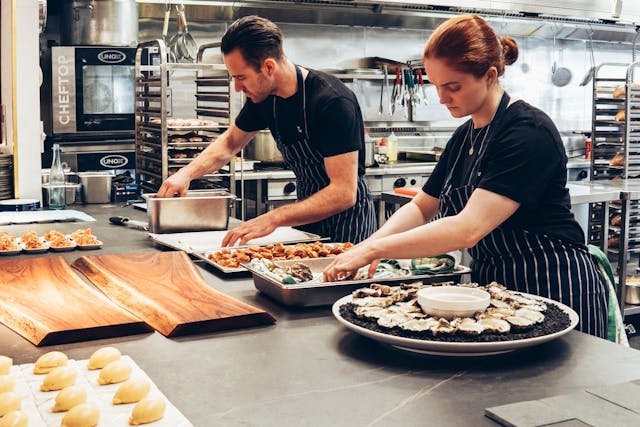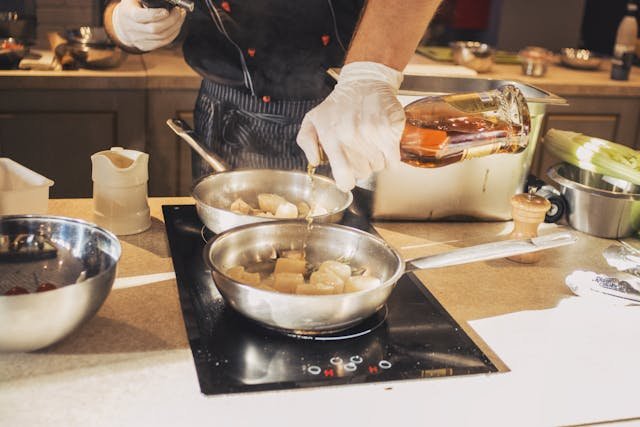
Mastering Restaurant Back Office Order Management for Smoother Operations
In the bustling world of restaurants, where front-of-house activities like serving customers and ensuring a delightful dining experience are paramount, the back office often works behind the scenes to keep everything running smoothly. A crucial aspect of back-office operations is order management, which involves tracking inventory, managing supplies, and ensuring that every aspect of the restaurant’s operations is streamlined. This blog will delve into the intricacies of mastering restaurant back-office order management to achieve smoother operations and sustained success.
Understanding the Importance of Order Management in Restaurants
Order management is the backbone of a restaurant’s operational efficiency. It encompasses the processes involved in tracking, controlling, and fulfilling orders from suppliers to ensure that the kitchen is always stocked with the necessary ingredients, utensils, and other supplies. Efficient order management ensures that a restaurant never runs out of stock, avoids overstocking, and reduces waste, all while keeping costs under control.
In the fast-paced environment of a restaurant, where demand can fluctuate based on various factors, mastering order management is crucial. It enables restaurants to respond quickly to changes, minimize disruptions, and maintain consistency in the quality of food and service. Moreover, a well-organized system allows restaurants to maintain a strong relationship with suppliers, ensuring that orders are fulfilled accurately and on time.
The Core Components of Effective Order Management
To master order management in a restaurant’s back office, it’s essential to understand the core components that make up an efficient system:
* Inventory Management
Inventory management is the foundation of order management. It involves keeping track of all the ingredients, supplies, and materials required to run a restaurant. An effective inventory management system helps in monitoring stock levels, predicting future needs based on historical data, and placing orders in a timely manner.
Automated inventory systems are increasingly popular in modern restaurants. These systems track inventory in real time, providing accurate data on what’s available and what needs to be ordered. By integrating inventory management with order management, restaurants can ensure that they always have the right amount of stock without overburdening their storage spaces.
*Supplier Relationship Management
Another critical component of order management is maintaining strong relationships with suppliers. A restaurant’s ability to get high-quality ingredients and supplies on time depends on the reliability of its suppliers. Establishing clear communication channels, negotiating favorable terms, and setting expectations for quality and delivery times are essential for successful supplier management.
By fostering strong relationships with suppliers, restaurants can ensure that they receive consistent service, even during peak times. This reliability is crucial for maintaining the smooth operation of the restaurant, as it reduces the risk of running out of essential supplies or receiving subpar ingredients.
*Order Processing and Fulfillment
Once inventory levels are monitored and supplier relationships are established, the next step in order management is the processing and fulfillment of orders. This process involves creating purchase orders, sending them to suppliers, tracking their status, and receiving the goods. Efficient order processing minimizes delays and ensures that the restaurant’s kitchen is always equipped to meet customer demand.
Order processing can be streamlined through automation, reducing the likelihood of errors and ensuring that orders are placed on time. By using an order management system that integrates with inventory and supplier management, restaurants can automate routine tasks, freeing up time for staff to focus on other critical aspects of operations.
Strategies for Streamlining Restaurant Back Office Order Management
Mastering restaurant back-office requires implementing strategies that enhance efficiency and reduce the likelihood of errors. Here are some proven strategies that can help restaurants optimize their order management processes:
*Automating Order Management Processes
One of the most effective ways to streamline order management is through automation. Automated systems can handle repetitive tasks such as inventory tracking, order processing, and supplier communication, reducing the need for manual intervention and minimizing the risk of errors.
Automation also allows for better data management. By collecting and analyzing data on inventory levels, order history, and supplier performance, restaurants can make informed decisions that improve efficiency and reduce costs. Moreover, automated systems can send alerts when inventory levels are low or when orders are delayed, allowing restaurants to take proactive measures to prevent disruptions.
*Implementing Just-in-Time Inventory
Just-in-time (JIT) inventory management is a strategy that focuses on ordering supplies only when they are needed, rather than keeping large amounts of stock on hand. This approach reduces storage costs and minimizes waste, as items are less likely to spoil or become obsolete.
JIT inventory requires precise order management. Restaurants must closely monitor inventory levels, predict demand accurately, and maintain strong relationships with suppliers to ensure that orders are fulfilled quickly. By implementing JIT, restaurants can improve their cash flow and reduce the amount of capital tied up in inventory.
*Enhancing Communication and Collaboration
Effective communication is essential for mastering order management. Restaurant staff, from the kitchen to the back office, must be on the same page when it comes to inventory needs and order processing. Regular meetings, clear documentation, and the use of collaborative tools can help ensure that everyone is aligned.
In addition to internal communication, maintaining open lines of communication with suppliers is crucial. By keeping suppliers informed of your restaurant’s needs and expectations, you can avoid misunderstandings and ensure that orders are fulfilled accurately and on time.
*Monitoring and Analyzing Performance
To continuously improve processes, it’s important to monitor performance and analyze data regularly. Key performance indicators (KPIs) such as order accuracy, delivery times, and inventory turnover can provide valuable insights into the efficiency of your management system.
By analyzing these metrics, restaurants can identify areas for improvement and make data-driven decisions that enhance efficiency. For example, if a particular supplier consistently delivers late, it may be time to renegotiate terms or consider alternative suppliers.
*Training and Empowering Staff
Finally, effective order management requires a well-trained and empowered staff. Employees who understand the importance are equipped with the right tools and knowledge are more likely to execute processes accurately and efficiently.
Providing training on order management best practices, as well as on the use of any automated systems, is essential. Additionally, empowering staff to take ownership of their roles and make decisions can lead to more proactive and efficient management.

Common Challenges in Restaurant Back Office Order Management
Despite the best efforts, restaurants may still encounter challenges in their order management processes. Understanding these challenges can help in devising strategies to overcome them:
*Inaccurate Inventory Data
One of the most common challenges is dealing with inaccurate inventory data. This can occur due to manual errors, lack of real-time tracking, or discrepancies between what’s recorded and what’s actually in stock. Inaccurate data can lead to overstocking, understocking, and increased waste.
*Supplier Issues
Another challenge is dealing with unreliable suppliers. Late deliveries, inconsistent quality, and communication breakdowns can disrupt the smooth flow of operations and lead to inefficiencies in the kitchen.
*Fluctuating Demand
The restaurant industry is highly dynamic, with demand fluctuating based on season, events, and trends. Managing orders effectively in the face of unpredictable demand requires flexibility and the ability to respond quickly to changes.
*Limited Storage Space
Many restaurants operate with limited storage space, making it challenging to stock up on supplies. Efficient management is essential in these situations to ensure that the restaurant has what it needs without overcrowding the storage areas.
Conclusion
Mastering restaurant back-office order management is critical for ensuring smoother operations and sustained success in the competitive restaurant industry. By understanding the core components of order management, implementing strategies to streamline processes, and overcoming common challenges, restaurants can optimize their back-office operations and provide a consistent, high-quality experience for their customers.
If you’re looking to streamline the order management of your restaurant supplies, contact Prockured today. Our solutions are designed to help you achieve efficiency, reduce costs, and enhance the overall operation of your restaurant.
